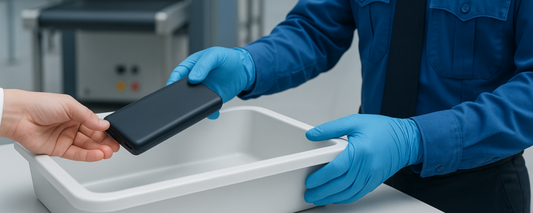In today’s tech-saturated world, charging your phone overnight has become an almost instinctive habit. Data shows that over 80% of users plug in their phones before bed to ensure a full battery by morning. But behind this seemingly simple behavior lie potential risks and health implications: fire hazards, battery degradation, sleep disturbance, electromagnetic radiation... Do we truly understand them?
This article seeks to re-examine this routine from a scientific perspective, helping you find a rational balance between convenience and safety.
1. Are There Safety Risks Associated with Overnight Charging?
Most incidents related to overnight charging stem not from when we charge, but how we do it.
In several reported cases, users charged their phones with uncertified or low-quality chargers, or placed them on beds or soft blankets—conditions that can block heat dissipation and lead to short circuits or even fires. Additionally, aging batteries, damaged cables, or loose connectors can also increase the risk.

Basic principles for safe charging include:
Using certified equipment with overcharge protection.
Avoiding flammable or poorly ventilated environments;
Regularly inspecting chargers and cables for wear or damage;
Ensure the device is placed on a hard, ventilated surface while charging.
In everyday life, you may also consider using fixed-position wireless chargers with features like magnetic alignment and foreign object detection. These products are designed for stable placement on nightstands or desktops, reducing the need for frequent cable handling and minimizing the risk of accidental contact or interference.
For example, the iWALK StandME Auto Wireless Charging Station features a rotating alignment system and built-in overheating protection. It also supports charging multiple devices at once—ideal for users with nighttime needs involving phones, smartwatches, or earbuds.

2. Electromagnetic Radiation and Sleep Health
Many people worry that charging a phone near the bed may expose them to harmful electromagnetic radiation. In reality, devices that meet international safety standards emit extremely low levels of electromagnetic fields (EMF), well below the permissible limits.
Importantly, EMF strength decreases rapidly with distance. As long as your charging device is placed at least half a meter from your head, electromagnetic interference is generally not a concern.
From another angle, however, the presence of a device may have a greater impact on sleep quality:
Occasional screen lighting;
Vibration or notification sounds;
Subconscious anticipation of messages;
These subtle but persistent distractions can significantly degrade sleep. At night, consider the following:
Enabling “Do Not Disturb” or airplane mode;
Turning the screen face-down or dimming its brightness;
Using a fixed-position wireless charging station instead of a cable, to avoid knocking the phone over or frequent interaction.
3. Battery Health: Are Smart Systems Really Smart Enough?
Older devices were more prone to battery wear due to constant overcharging. Fortunately, today’s smartphones and compliant chargers are equipped with sophisticated battery management systems that:
Automatically switch to trickle charge or stop charging at 100%;
Monitor temperature in real time to prevent heat-related degradation.
Precisely regulate voltage and current to reduce long-term battery stress.
That said, users should still adopt healthy charging habits:
Avoid letting battery levels frequently drop to 0% or stay at 100% for extended periods.
Aim to keep charge levels between 20% and 80%.
Refrain from charging in hot environments.
Perform a full charge-discharge cycle once a month to help calibrate battery readings.
Wireless charging devices can also reduce physical wear caused by repeated plugging and unplugging, helping maintain the integrity of your device’s ports over time. For long-term use, this is a gentler and more sustainable way to care for your device.
This is where products like the iWALK StandMe Power come into play. With a foldable, MagSafe-compatible design, it offers efficient wireless charging across multiple devices, without repeated cable handling that can strain device connectors.

Conclusion: Beyond a Full Battery, Let’s Focus on a Full Life
Charging your phone overnight is a convenience enabled by technology. But when that convenience becomes an unconscious habit, it’s worth recalibrating our sense of risk and reconsidering how we interact with our devices.
Safe charging should not rely solely on “smart” systems. It also depends on our awareness of everyday details, our respect for healthy rhythms, and our understanding of the delicate balance between technology and our environment.
True peace of mind doesn’t come from the fastest charge or the most features—it comes from letting technology quietly support life, not disrupt it. May each night of charging serve as a quiet preparation for a brighter, more energized tomorrow.










